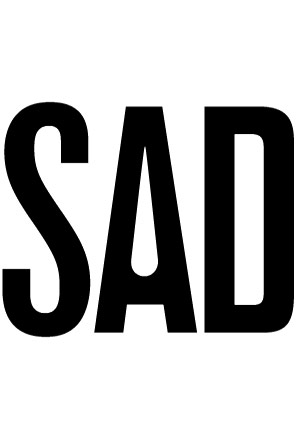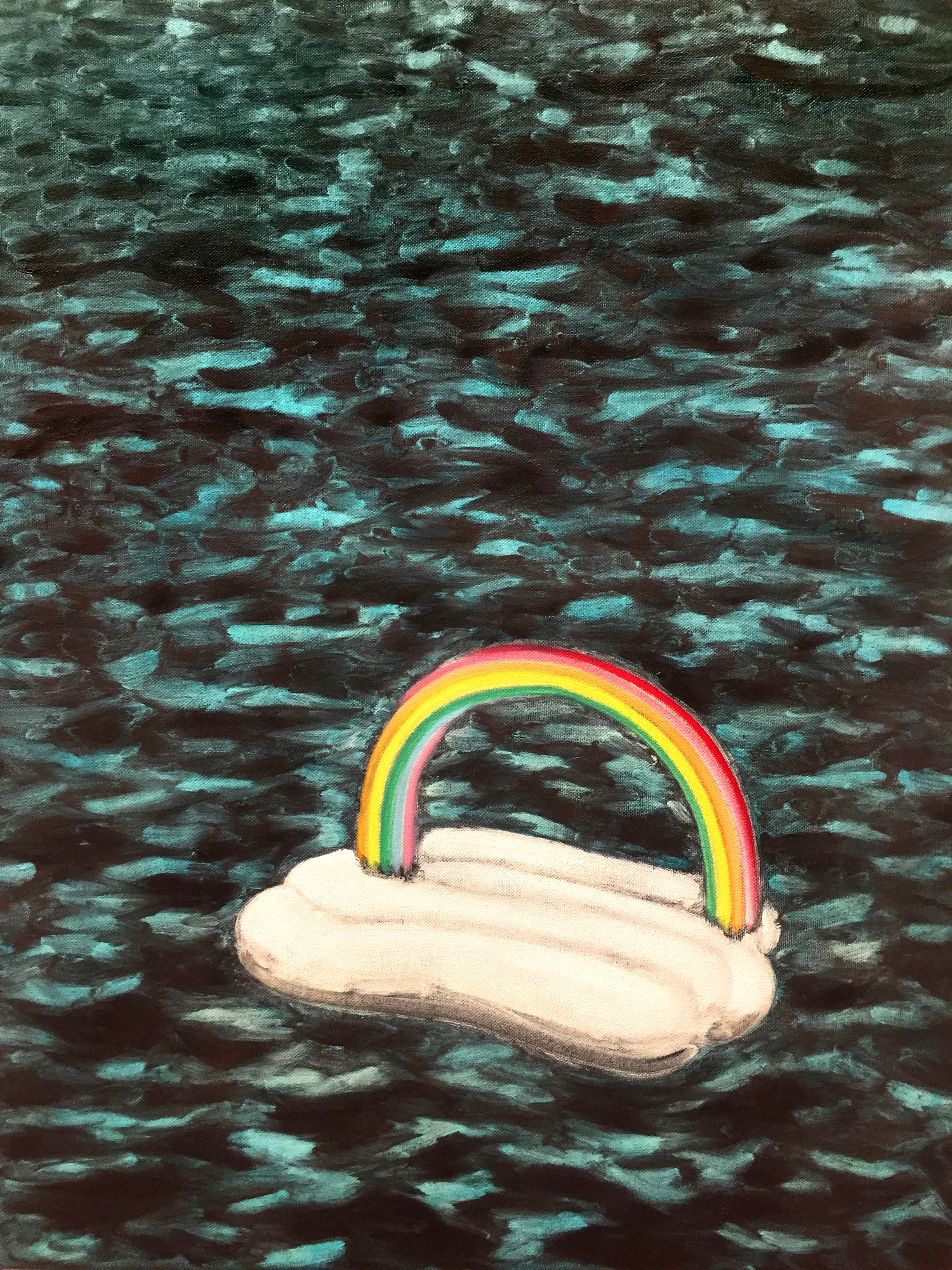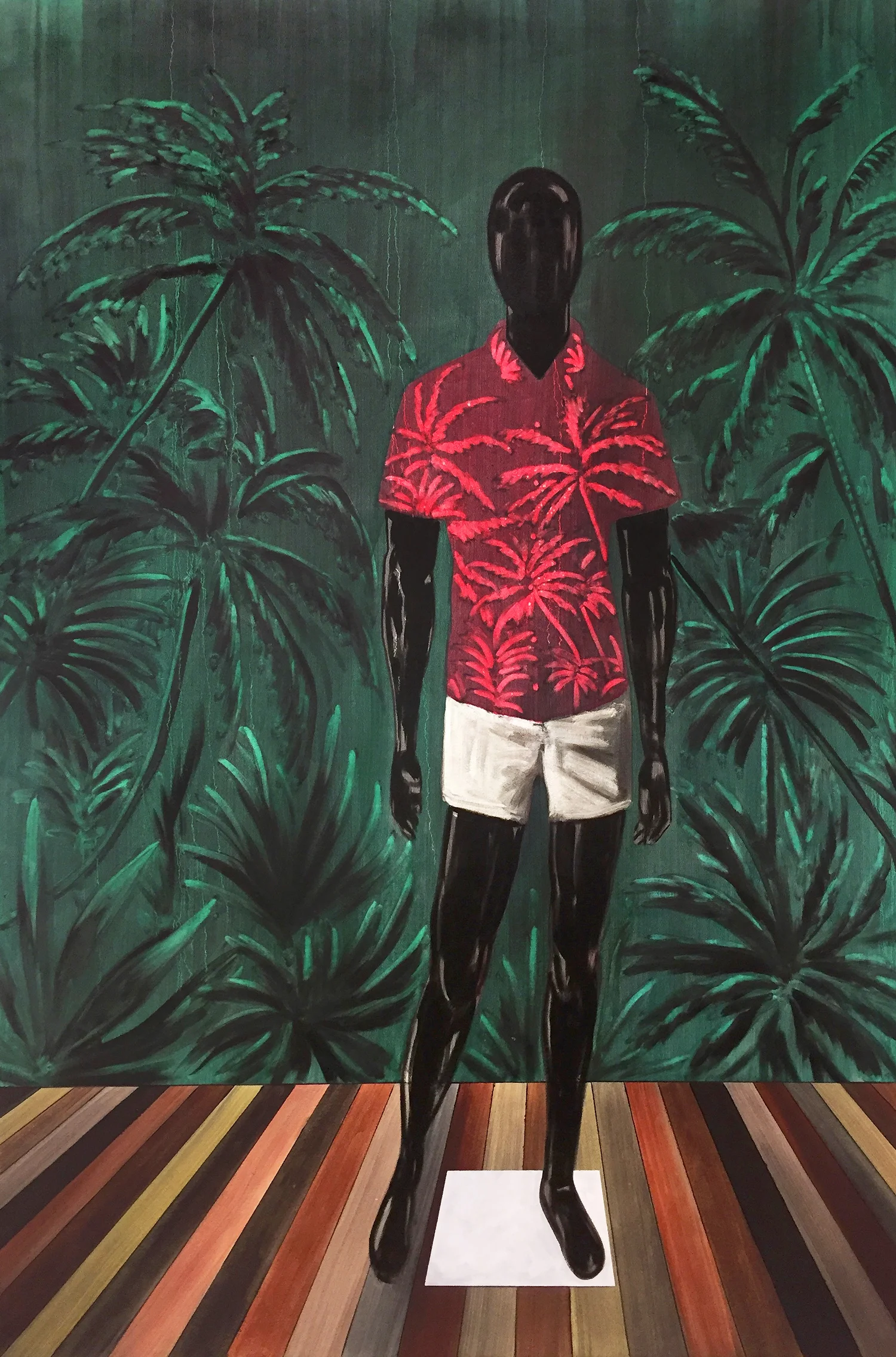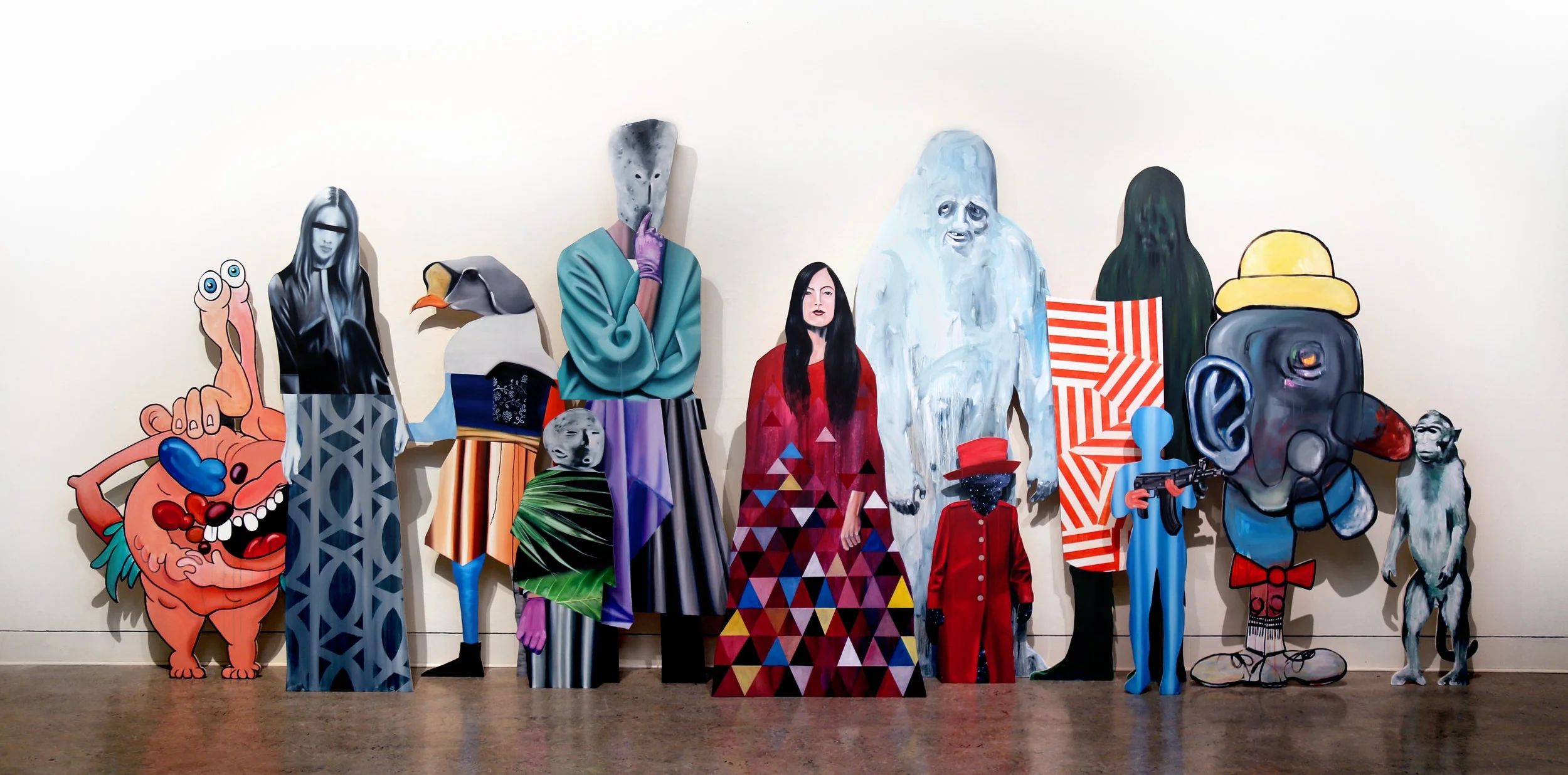Meet October's Featured Artist: Angus Ferguson!
/Future Legend 1, 2009
His brain is “a puddle with a reflection of a TV on the surface.” A direct result of, lately, “too much TV-series binge-watching”, Angus Ferguson tells me. He’s been painting all day, and curbing the anxiety he feels when he’s not. He’s listening to Wichita Lineman by Glen Campbell and feeling nostalgic. But nostalgia fuels him, for he sifts through old books and sketches when searching for creative inspiration. It sounds like he’s got plenty of inspiration—for if he could be doing anything right now, he’d be “making better work.”
A modern-day Caravaggista, husband, and father of three, Angus describes himself to be a full-time painter, and occasional sculptor. It’s been a long road for this hard working artist, and one not without hardship. A tough self-critic, he admits he likes painting most. “When it’s good it’s usually pretty easy to understand and when it’s bad it makes me angry, until I decide it’s good a few years later.” Looking at his works, I’m glad he makes this decision, because I too, decide it’s good.
Angus first tells me about his piece, Charon. A colourful inflatable rainbow floating amid dark, textured waters. The juxtaposition of the two intrigue me. There’s a yielding austerity in the scene, with an atmosphere so thick you can feel it. There’s a story behind this rainbow, but there isn’t a pot of gold at the end of this one.
Charon, 2018
“Inflatable beach toys like this rainbow float are everywhere,” Angus explains. “I painted it last summer while working on a series of paintings concerning ghosts and hauntings. I started thinking about colonial histories as ghost stories and current day migration of people. People leaving their homes in desperation, then journey across open water at great risk of death. Charon is [the ferry captain] who takes souls to the land of the dead in Greek mythology. So it is a painting about death, I suppose.”
Sharing with me another work, The Ghost Story, Angus writes that the piece “suggests a landscape conquered, then commodified through fashion and further exoticized by being placed on a mannequin. [The piece] is also a representation of a person of colour.” At glance, it’s a simple work. But there’s movement in its stillness. It is 17th century worldwide mercantilism; slave trade is flourishing. The Ghost Story haunts me, and pays homage to its sufferers.
Ghost Story, 2018
Like most art I’m drawn to, Angus’ fragmented and figurative pieces toy with my emotions. Take, for instance, House of Secrets. I want to sink deeply into the comfort and ease of that worn-in couch; I’m nostalgic over the seemingly original hardwood floors. The flora is growing, alive, and well. But there’s a man covered by a blanket. Blood seemingly seeps out from under him. There’s a secret letter or message beneath the man on the couch. Clearly, all is not well.
House of Secrets, 2012
“At the time I painted [House of Secrets] I was interested in cults. [It was] modelled after photographs of deceased members of the Heaven’s Gate cult in California, who covered themselves in purple sheets in a mass suicide.” Angus continued, “I mimicked the pose and made a painting, on the walls are copies of paintings of mine. I was playing around with ideas of transcendence through art and how people’s tastes and allegiances can be a bit cultish. (I still own that couch).”
With a ’less-is-more’ approach to both our conversation and his works, Angus wrapped up with one final piece, and some parting words: “Art is important. But we don’t need to take it with us when we leave the planet. We can make more.”
not yet titled, 2012
To see more of Angus’ playful, powerful, and provocative art, visit him on Instagram at @angus_ferguson.










